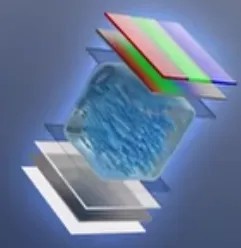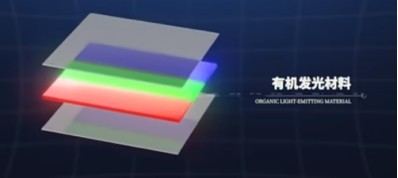2024-11-18
A Brief Analysis of Display Technologies: Differences Between LCD, OLED, mini LED, and micro LED
In the LED display technology and screen market, we often hear these terms: LED, LCD, OLED, mini LED, and micro LED. So, what are the differences among these displays? How should one choose the right one for themselves?
At LED Light Display Technology In the LED light display technology and display screen market, we often hear these terms: LED, LCD, OLED, mini LED, and micro LED. So, what are the differences among these display screens? How should one choose the right one?
First, let's talk about the development and relationships of these types of display screens:
LED is a basic light-emitting technology. Traditional LED displays are most commonly used for large screen displays. They use large LED chips with constant brightness as the backlight source, widely applied in outdoor large displays such as advertising screens, stadium scoreboards, traffic signs, etc. These scenarios require high brightness and wide viewing angles to ensure visibility from a distance.
LCD liquid crystal displays initially used cold cathode fluorescent lamps (CCFL) as the backlight source, which were later gradually replaced by LED backlights, forming what we commonly call LED-LCD. This combination improved LCDs in terms of power consumption and brightness uniformity.
OLED is a completely different self-emissive technology, different from traditional LED principles, but both belong to the light-emitting display field.
Mini LED is a refined development of traditional LED technology, improving display effects by reducing the size of LED chips and increasing the number and partitioning of chips.
Micro LED can be seen as a further miniaturization of mini LED, and like OLED, it is a self-emissive technology but with superior performance.
A brief analysis of advantages, disadvantages, and usage scenarios
1. LCD Liquid Crystal Display
Advantages: Mature technology, low cost, high production efficiency, no screen burn-in issues;
Disadvantages: Relatively low contrast, longer response time, limited viewing angles, cannot block backlight source, thicker and bulkier;
Applicable scenarios: LCD screens are suitable for users sensitive to price and not demanding extreme display effects. Commonly used in mid-to-low-end TVs, computer monitors, office equipment displays, etc. They perform adequately in daily office work and general web browsing where high contrast and fast response are not required.

2.OLED
Advantages: Relatively high contrast, wide color gamut, vivid colors, independently controllable pixels, wide viewing angles, compact size, flexible;
Disadvantages: High cost and price, organic materials prone to aging, easy to burn-in, shorter lifespan;
Applicable scenarios: OLED is the first choice for high-end smartphones, tablets, high-end TVs, wearable devices, and other applications pursuing high-quality displays. For gamers, photography enthusiasts, and movie buffs seeking ultimate color and high contrast, OLED devices provide an excellent experience. In foldable devices, OLED's flexibility is irreplaceable.

3. Mini LED
Advantages: Better image quality, local dimming, high contrast, high brightness, less prone to burn-in, long lifespan, more delicate colors, lower cost than OLED;
Disadvantages: High heat dissipation requirements, higher cost than LCD, thicker and bulkier;
Applicable scenarios: Mini LED has great advantages in mid-to-high-end TVs, monitors, and laptop screens. Suitable for users who demand high image quality, high contrast, high brightness, and rich colors but want to avoid OLED's burn-in risk and high cost. It is also emerging in automotive displays and other scenarios requiring high image quality and stability.

4. Micro LED
Advantages: Extremely high brightness, extremely high contrast, extremely high resolution, fast response speed, low power consumption, long lifespan;
Disadvantages: Expensive, low yield rate, difficult mass production, high technical difficulty;
Applicable scenarios: Although micro LED is not yet widely popularized, it has broad prospects. It is expected to be applied in high-end virtual reality (VR)/augmented reality (AR) devices, ultra-high-definition large displays, high-end automotive displays, smartwatches, and other fields. Especially in professional-grade display scenarios with stringent performance requirements, such as high-end design and medical imaging, it has great potential.

In summary, in the light display market, the above display technologies shine in different markets. With continuous technological progress, we look forward to them bringing more innovations to the visual experience. Dehui LED displays will also continue to participate in market technology research and development, advancing together in the LED display industry!
Previous: Defensive LED Display Public Information: Building a Digital Security Barrier
Next: "Digital Intelligence + LED Display": How to Improve E-commerce Live Streaming Conversion Rates?
Latest News


